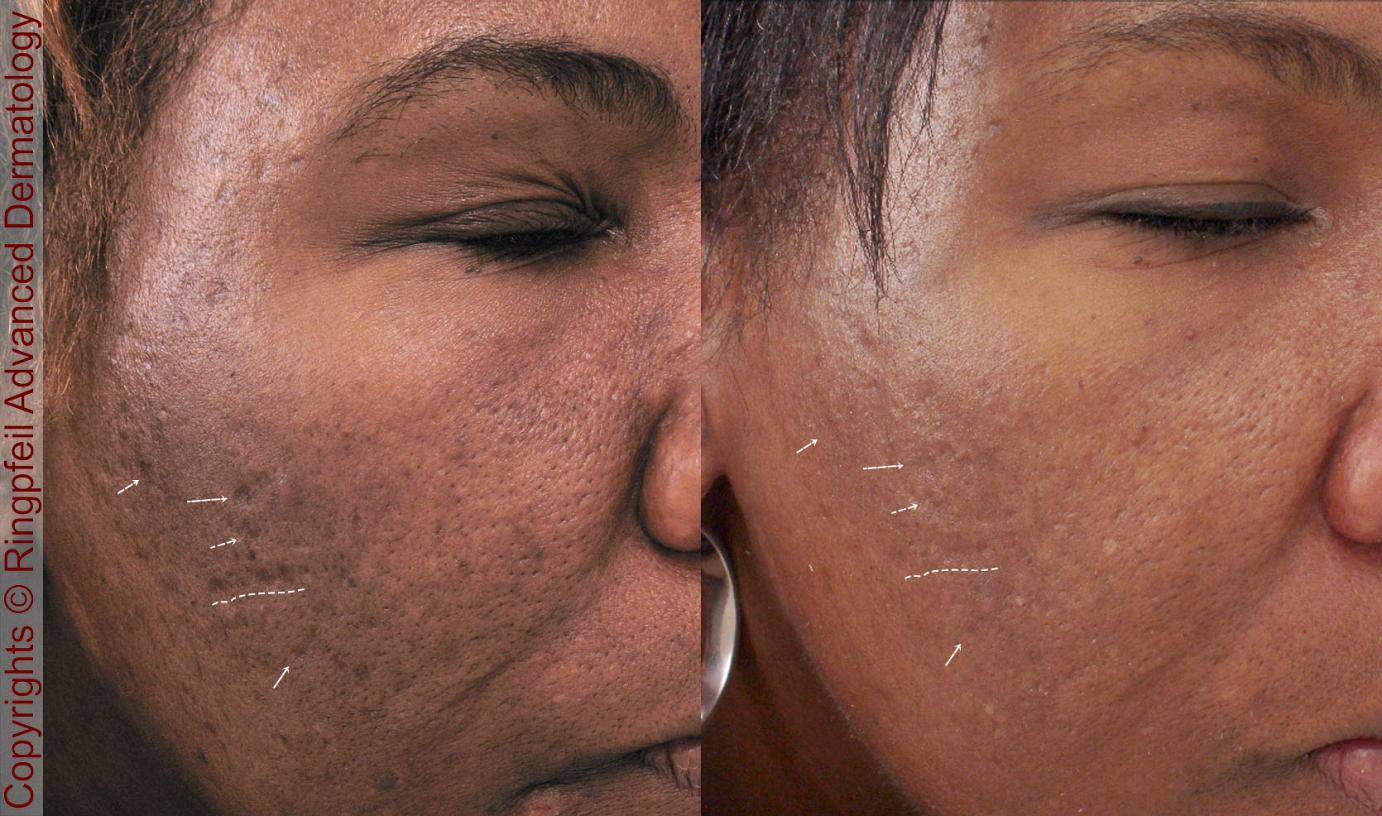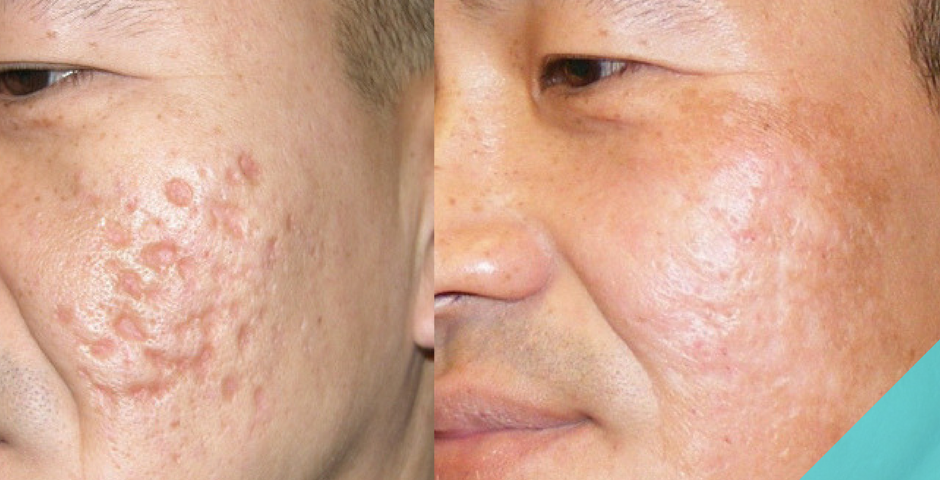Recognizing the Various Skin Disease and Reliable Therapy Alternatives for Acne Scars
Acne scars stand for a complicated interaction of skin disease that substantially influence individuals' self-esteem and total skin health. Comprehending the unique sorts of acne marks-- atrophic and hypertrophic-- along with their underlying reasons, is pivotal for determining effective therapy strategies. Different therapeutic alternatives exist, ranging from innovative skin-related procedures to all-natural treatments. Nevertheless, the efficiency of these therapies usually pivots on individualized evaluations by certified specialists. As we discover the landscape of acne scar monitoring, it ends up being evident that the journey toward clearer skin may entail more than simply topical options.
Kinds of Acne Scars
Acne scars can show up in numerous kinds, each needing specific therapy approaches. The two primary classifications of acne marks are hypertrophic and atrophic scars. Atrophic marks are identified by a loss of tissue, causing depressed areas on the skin. These marks are more categorized right into 3 subtypes: ice pick marks, which are deep and narrow; boxcar scars, which are broader and have well-defined sides; and rolling marks, which develop a wave-like appearance because of unequal skin structure.
On the other hand, hypertrophic scars result from an overproduction of collagen throughout the healing process, bring about elevated areas on the skin. These scars are usually firm and can vary in color, in some cases appearing red or darker than the bordering skin.

Root Causes Of Acne Scarring
Marking happens as a result of the body's all-natural healing response to swelling and injury triggered by acne lesions. When acne types, it activates an inflammatory feedback, causing the release of numerous cytokines and growth variables that advertise healing. However, this procedure can in some cases bring about extreme tissue development or inadequate fixing, leading to marks.
The primary reasons of acne scarring include the seriousness of the acne itself, duration of the sores, and individual skin kinds. Severe inflammatory acne, such as cysts and nodules, is most likely to lead to scarring as a result of deeper cells damages. In addition, improper handling of acne sores, such as pressing or picking, can worsen cells injury and inflammation, boosting the chance of scarring.
Genetic tendency additionally plays a significant function; individuals with a household background of scarring go to a higher risk. Moreover, skin kind and color can influence mark development, as darker skin tones may experience post-inflammatory hyperpigmentation, while lighter skin might create atrophic marks.

Treatment Options for Scarring
Effective therapy alternatives for acne scarring differ relying on the kind and extent of the marks. Normally categorized into atrophic, hypertrophic, and keloid marks, these problems call for customized techniques for ideal results.
For atrophic marks, which are identified by a loss of cells, treatments such as chemical peels, microdermabrasion, and laser therapy are commonly used. These approaches advertise skin renewal and stimulate collagen production, therefore boosting skin structure. Subcision, a minimally invasive treatment, can likewise work by breaking up coarse bands underneath the skin.
Hypertrophic look what i found and keloid scars can be more testing to treat. Options consist of corticosteroid injections to reduce swelling and flatten the marks. acne and acne scars treatment. In many cases, cryotherapy or laser therapy may be advised to lessen their appearance
Surgical alternatives are offered for extreme scarring, where excision or skin grafting may be necessary. It's crucial for people to speak with a skin doctor to evaluate their details scar kind and talk about one of the most appropriate therapy plan. Incorporating multiple treatments frequently generates the most effective end results, guaranteeing that each patient's unique skin problem is addressed successfully.
Natural Home Remedy and All-natural Solutions
All-natural services and natural remedy can provide an easily accessible approach for individuals looking for to improve the appearance of acne marks. Numerous ingredients discovered in the home cooking area have demonstrated prospective advantages in enhancing skin structure and advertising recovery.
One popular solution is aloe vera, understood for its anti-inflammatory and soothing homes. Using fresh aloe vera gel straight onto the scars can help enhance skin hydration and minimize soreness. Similarly, honey possesses natural antibacterial and moisturizing top qualities sites that can assist in mark recovery. It can be utilized as a mask, left on for half an hour prior to rinsing.
Another effective choice is lemon juice, which works as a natural exfoliant and can lighten hyperpigmentation. Nevertheless, it ought to be utilized carefully, as it might create photosensitivity. Oat meal masks are additionally valuable; their mild peeling can assist eliminate dead skin cells while soothing irritability.
Essential oils, such as tea tree oil and lavender oil, can further sustain scar recovery due to their antimicrobial residential properties. It is critical to do a patch test prior to applying any solution to make sure there are no unfavorable reactions. These all-natural remedies can be a corresponding method in the journey to lessen acne scars.
Preventing Future Scarring
Embracing an aggressive method to skin care can significantly minimize the risk of creating future acne marks. Regular cleaning, exfoliation, and hydration can assist keep skin health and avoid clogged up pores.
Additionally, preventing the lure to press or pick acne sores is critical, as this can result in inflammation and succeeding scarring. Rather, people should concentrate on using topical therapies that advertise recovery and reduce inflammation. Components such as salicylic acid, benzoyl peroxide, and retinoids are recognized for their efficiency in managing acne and reducing scars.

Finally, keeping a healthy diet rich in anti-oxidants and remaining moisturized assistances skin regrowth. By implementing these precautionary procedures, people can significantly reduce their danger of future scarring and advertise total skin wellness.
Conclusion
In conclusion, a thorough understanding of acne marks, including both atrophic and hypertrophic kinds, is crucial for efficient treatment approaches. Consultation with a dermatologist stays critical to create tailored strategies that take into consideration individual skin kinds and mark severity, inevitably improving the efficacy of scar management methods.
Acne scars stand for a complex interaction of skin conditions that substantially impact people' self-esteem and general skin health. The 2 primary classifications of acne scars visit site are hypertrophic and atrophic marks. These scars are more classified right into 3 subtypes: ice pick marks, which are deep and narrow; boxcar marks, which are wider and have distinct edges; and rolling scars, which produce a wave-like appearance due to irregular skin texture.
A detailed assessment with a skin doctor can aid identify the most ideal intervention, taking into account the person's skin kind, mark extent, and overall skin health and wellness.
Appointment with a dermatologist stays critical to develop individualized strategies that consider individual skin types and scar intensity, inevitably enhancing the efficacy of scar monitoring techniques.